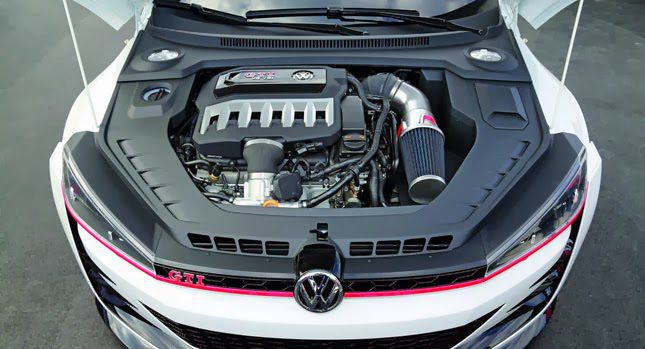Just how to Choose the Right Opel Corsa Engine for Your Auto
Comprehensive Evaluation of a Subcompact Automobile's Powertrain Capabilities
In the world of vehicle engineering, the powertrain of a subcompact auto stands as an essential nexus where performance, performance, and advancement converge. When scrutinizing the intricate internet of elements that drive these automobiles forward, one reveals a symphony of engineering marvels waiting to be studied. From the engine's ruthless pursuit of optimal efficiency to the transmission's smooth choreography of power distribution, every aspect plays an important function in defining the overall driving experience. Beyond the surface lies a chest of insights waiting to be uncovered, assuring a deeper understanding of just how these powertrains absolutely get on in the realm of sensible application.
Engine Efficiency Evaluation
In evaluating the engine efficiency of the subcompact vehicle, a comprehensive evaluation exposes its effectiveness and power outcome under numerous driving conditions. The subcompact auto's engine, a critical component of its powertrain system, demonstrates commendable efficiency metrics.
Moreover, when based on extensive screening scenarios such as high-speed acceleration or uphill climbs, the engine shows resilience and responsiveness. Its power result stays consistent, offering adequate acceleration when needed. The subcompact auto's engine is customized to meet the needs of urban driving, where quick acceleration and active maneuverability are important.
Additionally, the engine's design includes modern-day innovations that boost its performance features. Attributes like turbocharging or variable valve timing contribute to enhanced power shipment and torque, improving the total driving experience. In conclusion, the engine performance of the subcompact auto highlights its capability to supply efficient and dependable power result across numerous driving conditions.
Transmission Efficiency Evaluation
Assessing the subcompact auto's transmission performance involves assessing its efficiency in sending power flawlessly across different driving problems. The performance of a transmission system is critical as it straight influences the total performance and fuel economy of the lorry.
One usual method used to review transmission performance is with dynamometer testing, where the power result from the engine is determined at the input and outcome shafts of the transmission. By examining these aspects, engineers can identify areas for renovation and optimize the transmission system for much better general efficiency and efficiency.
Gas Efficiency Examination
The assessment of the subcompact car's gas efficiency involves a thorough analysis of its intake prices under various driving problems. Fuel performance is a critical consider examining the general efficiency and cost-effectiveness of a lorry. By determining the amount of fuel eaten per system distance traveled, usually shared as miles per gallon (MPG) or liters per 100 kilometers (L/100 kilometres), the performance of the subcompact automobile's powertrain can be determined.

Furthermore, developments in technology, such as hybrid systems, regenerative stopping, and automated start-stop systems, have actually significantly boosted gas performance in modern-day subcompact vehicles. Suppliers remain to introduce and maximize powertrain components to improve fuel performance while satisfying performance demands and ecological laws. Reviewing a subcompact automobile's gas performance provides important understandings for customers seeking economical and sustainable transportation options.
Velocity and Handling Analysis
An indispensable element of assessing the performance capabilities of a subcompact automobile depends on examining its velocity and handling attributes. Velocity is crucial as it determines how quickly the vehicle can get to wanted speeds, impacting general driving experience and ability to move in various traffic problems. opel corsa engine. Subcompact vehicles are commonly favored for their nimbleness and dexterity, making acceleration from grinding halt and during surpassing maneuvers important aspects to take site link into consideration
When it concerns handling, a subcompact cars and truck's capability to navigate edges, keep stability at high speeds, and offer a responsive steering feeling are paramount. Limited city streets and winding roadways require accurate dealing with to make sure motorist confidence and safety. Aspects such as suspension tuning, weight circulation, and tire grip play considerable functions in identifying a subcompact cars and truck's total handling expertise.

Powertrain Elements Introduction
Upon delving right into the ins and outs of a subcompact automobile's efficiency, a comprehensive evaluation of its powertrain elements is vital to grasp the vehicle's mechanical foundations. The powertrain of a subcompact cars and truck usually includes the engine, transmission, driveshaft, differential, and axles. The engine, commonly a smaller displacement four-cylinder in a subcompact cars and truck, is accountable for generating power by burning fuel and converting the energy into mechanical pressure. The transmission, whether handbook or automatic, transfers this power to the wheels through the driveshaft. The differential permits the wheels to rotate at various rates when transforming, boosting ability to move. The axles send power from the differential to the wheels, making it possible for motion. Comprehending how these elements function together is crucial in analyzing a subcompact vehicle's overall efficiency, efficiency, and driving characteristics. In the next area, we will delve much deeper into the particular duties and interactions of each powertrain part to supply a comprehensive summary of a subcompact automobile's powertrain capabilities.
Verdict
Finally, the subcompact cars and truck's powertrain capabilities have been thoroughly evaluated in terms of engine performance, transmission performance, gas handling, efficiency, and velocity. The detailed review highlights the importance of each component working with each other effortlessly to supply optimal performance. In general, the powertrain components of the subcompact cars and truck have actually been discovered to be efficient and well-balanced, making it a reliable selection for chauffeurs useful content seeking a portable and fuel-efficient lorry.
In the world of automotive engineering, the powertrain of a subcompact car stands as an important nexus where performance, advancement, and performance converge.In assessing the engine efficiency of the subcompact vehicle, a comprehensive evaluation reveals its efficiency why not try these out and power result under different driving problems.Examining the subcompact auto's transmission efficiency entails examining its performance in transmitting power seamlessly across different driving conditions. Comprehending how these elements work together is crucial in analyzing a subcompact auto's overall efficiency, effectiveness, and driving dynamics.In verdict, the subcompact vehicle's powertrain capacities have actually been thoroughly assessed in terms of engine performance, transmission efficiency, gas velocity, handling, and performance.